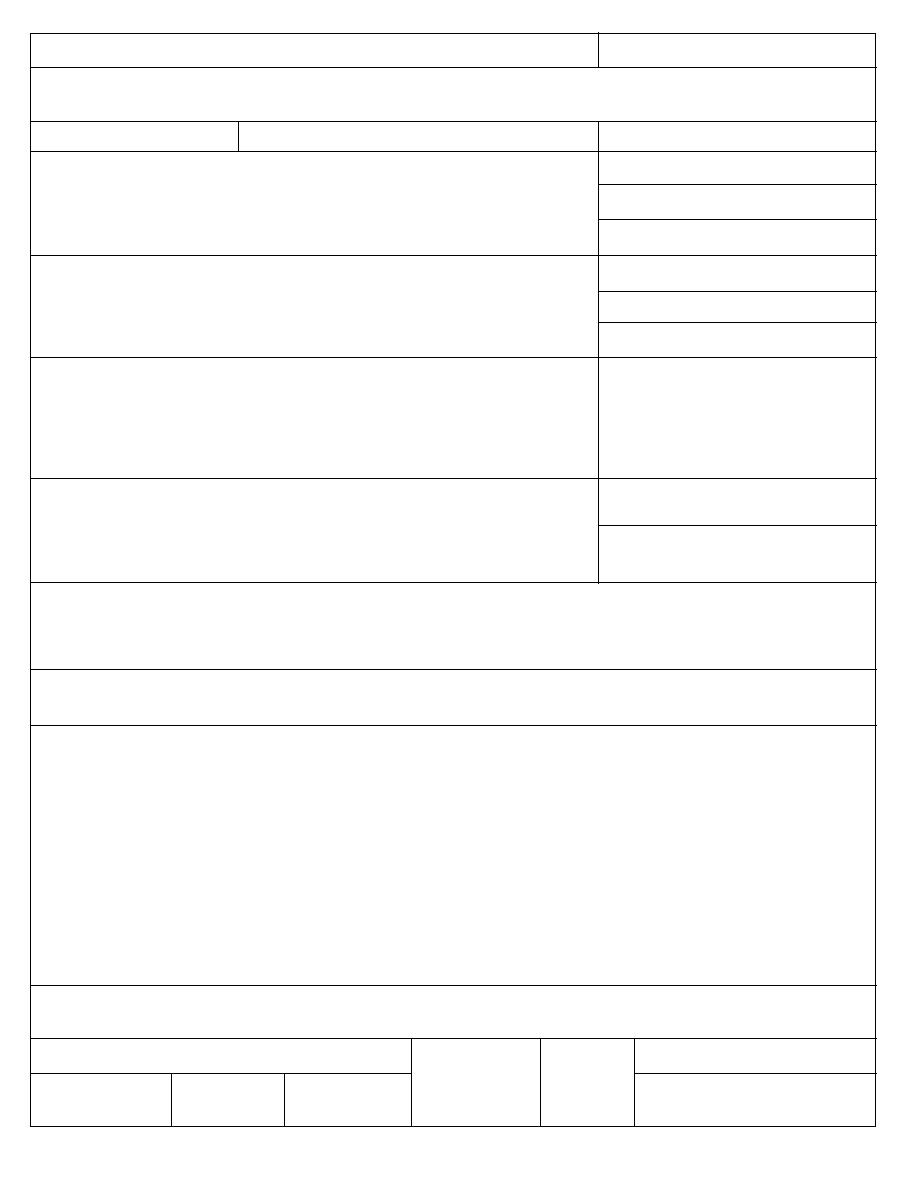
Form Approved
REPORT DOCUMENTATION PAGE
OMB No. 0704-0188
Public reporting burden for this collection of information is estimated to average 1 hour per response, including the time for reviewing instructions, searching existing data sources, gathering and maintaining the
data needed, and completing and reviewing this collection of information. Send comments regarding this burden estimate or any other aspect of this collection of information, including suggestions for reducing
this burden to Department of Defense, Washington Headquarters Services, Directorate for Information Operations and Reports (0704-0188), 1215 Jefferson Davis Highway, Suite 1204, Arlington, VA 22202-4302.
Respondents should be aware that notwithstanding any other provision of law, no person shall be subject to any penalty for failing to comply with a collection of information if it does not display a currently valid
OMB control number. PLEASE DO NOT RETURN YOUR FORM TO THE ABOVE ADDRESS.
1. REPORT DATE (DD-MM-YY)
2. REPORT TYPE
3. DATES COVERED (From - To)
November 2001
Technical Report
4. TITLE AND SUBTITLE
5a. CONTRACT NUMBER
5b. GRANT NUMBER
Sampling for Explosives Residues at Fort Greely, Alaska
Reconnaissance Visit July 2000
5c. PROGRAM ELEMENT NUMBER
6. AUTHOR(S)
5d. PROJECT NUMBER
Marianne E. Walsh, Charles M. Collins, Charles H. Racine,
5e. TASK NUMBER
Thomas F. Jenkins, Arthur B. Gelvin, and Thomas A. Ranney
5f. WORK UNIT NUMBER
7. PERFORMING ORGANIZATION NAME(S) AND ADDRESS(ES)
8. PERFORMING ORGANIZATION REPORT
NUMBER
U.S. Army Engineer Research and Development Center
Cold Regions Research and Engineering Laboratory
72 Lyme Road
ERDC/CRREL TR-01-15
Hanover, New Hampshire 03755-1290
9. SPONSORING/MONITORING AGENCY NAME(S) AND ADDRESS(ES)
10. SPONSOR / MONITOR'S ACRONYM(S)
U.S. Army Alaska
Fort Richardson, Alaska 99505
11. SPONSOR / MONITOR'S REPORT
NUMBER(S)
12. DISTRIBUTION / AVAILABILITY STATEMENT
Approved for public release; distribution is unlimited.
Available from NTIS, Springfield, Virginia 22161.
13. SUPPLEMENTARY NOTES
14. ABSTRACT
Impact areas are lands used by the army for ordnance testing and training. The impact areas of Fort Greely, Alaska, are located on lands withdrawn from
the public domain under the Military Lands Withdrawal Act (PL 106-65). The Army has pledged to implement a program to identify possible munitions
contamination and evaluate the potential for surface water and groundwater contamination. Because of the large size (85,042 acres) of the impact areas,
characterization of the contamination levels will be difficult. We have begun a multiphase sampling program at one impact area by first sampling locations
that are likely to be contaminated and to identify locations that have the greatest potential to contaminate adjacent surface and groundwater. Based on a
review of records at the Fort Greely Range Control and consultation with the Cold Regions Test Center (CRTC), we chose to sample the Washington
Impact Area. We focused our sampling on surface soils and collected both composite (multi-increment) and discrete samples at locations of known firing
events and from areas on the range that had evidence of range use. Evidence included cratering, pieces of munitions, or a designation as a firing point.
Firing events included tests of 81-mm mortars, Tube-launched Optically tracked Wire-guided (TOW) missiles, 40-mm high-explosive cartridges, and
Sense and Destroy Armor (SADARM). We detected explosives residue in 48% of the 107 soil samples we collected. RDX was the most frequently
detected explosive (39%). Of the samples above the detection limit, median RDX concentration was only 0.021 g/g. Low-order detonations accounted for
four of the five highest RDX concentrations. TNT was the second most frequently detected explosive (21%). Median TNT concentration in samples where
TNT was detected was only 0.004 g/g. Low-order detonations produced the highest TNT concentration we found. The amino-dinitrotoluene transforma-
tion products of TNT were detected in about 10% of the samples. HMX was found in 11% of the samples. The analytes 2,4-DNT and NG were detected at
a firing point and in a few samples on the Washington Impact Area. High-explosive projectiles that function properly appear to leave little residue in the
surface soil. Low-order detonations, where only part of the high-explosive filler detonated leaving solid explosive composition in contact with surface soil,
produced the highest soil concentrations observed. Also, firing points are sources of NG and 2,4-DNT. The greatest potential threat of contamination of
surface and groundwater would be high numbers of low-order detonations or heavily used firing points located in groundwater recharge areas.
15. SUBJECT TERMS
Explosives
Ranges
Sampling
Impact area
RDX
TNT
16. SECURITY CLASSIFICATION OF:
17. LIMITATION OF
18. NUMBER
19a. NAME OF RESPONSIBLE PERSON
OF ABSTRACT
OF PAGES
a. REPORT
b. ABSTRACT
c. THIS PAGE
19b. TELEPHONE NUMBER (include area code)
U
U
U
U
50
Standard Form 298 (Rev. 8-98)
]Prescribed by ANSI Std. 239.18



 Previous Page
Previous Page
